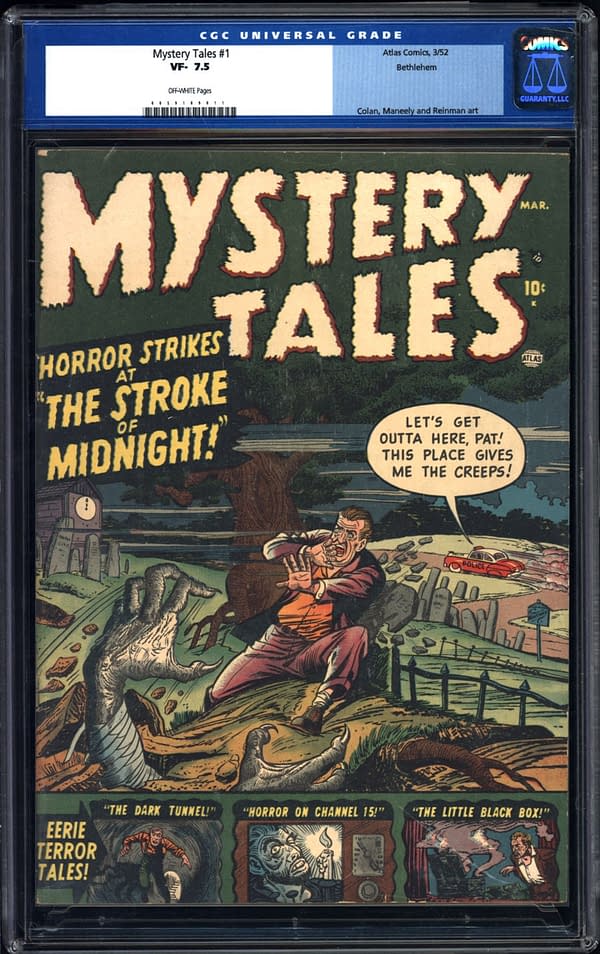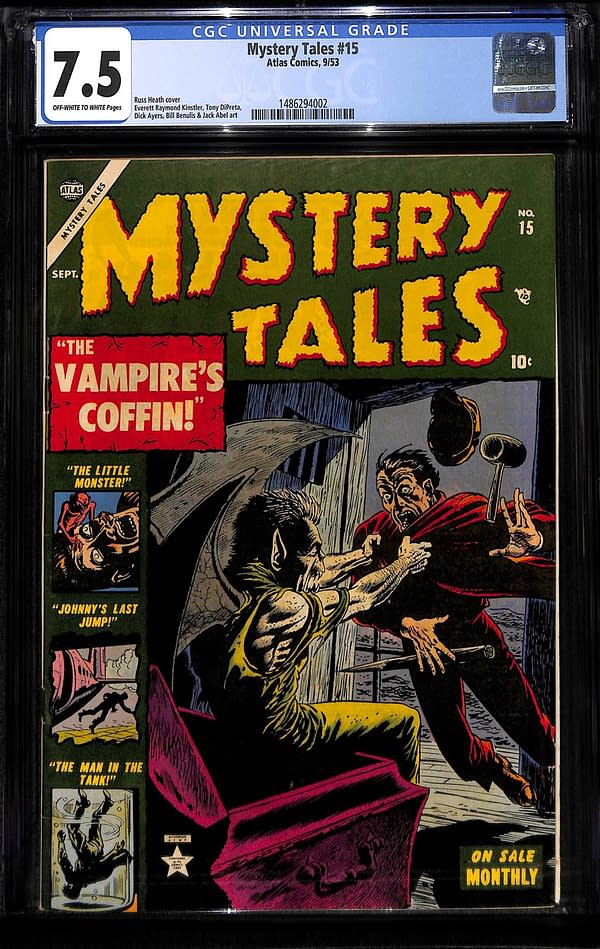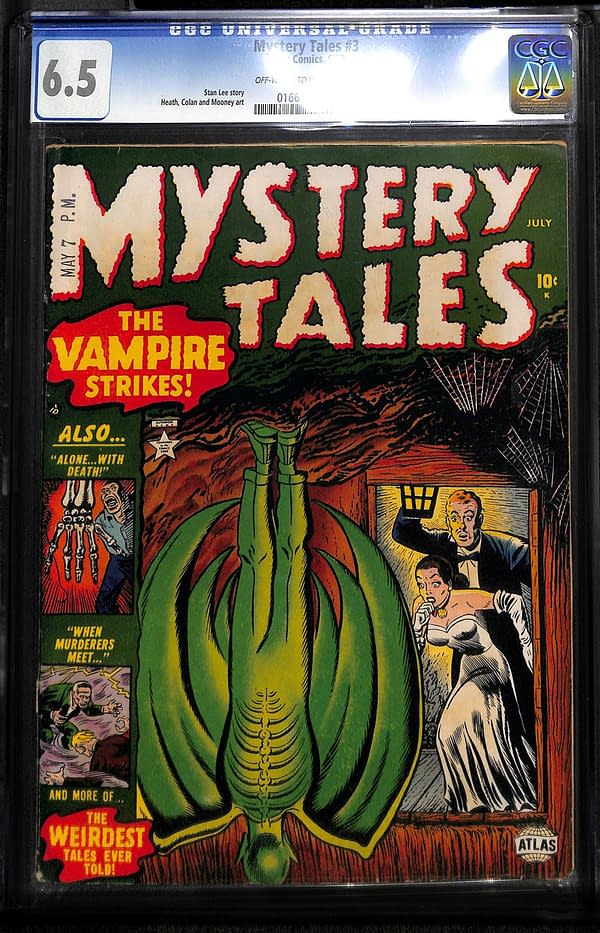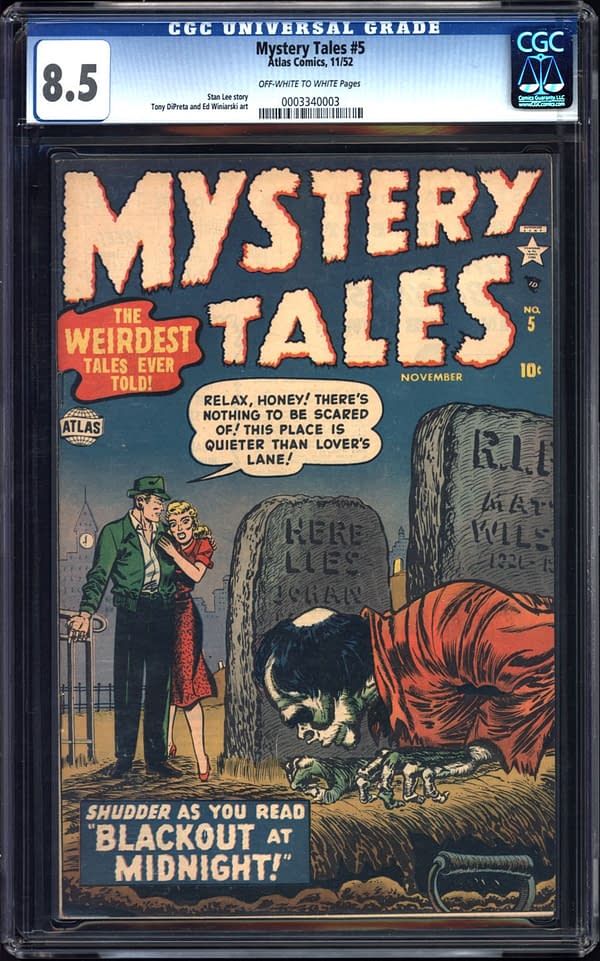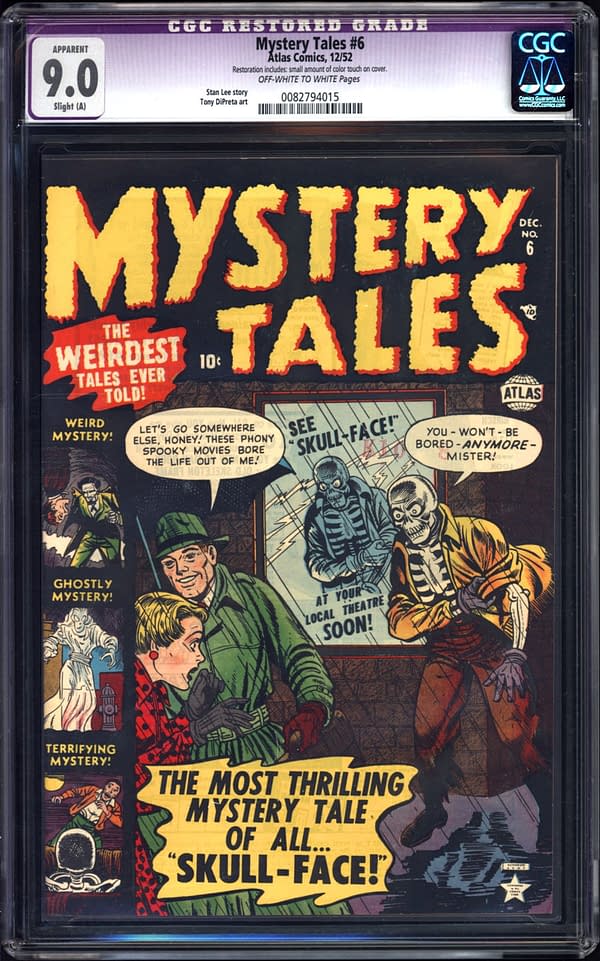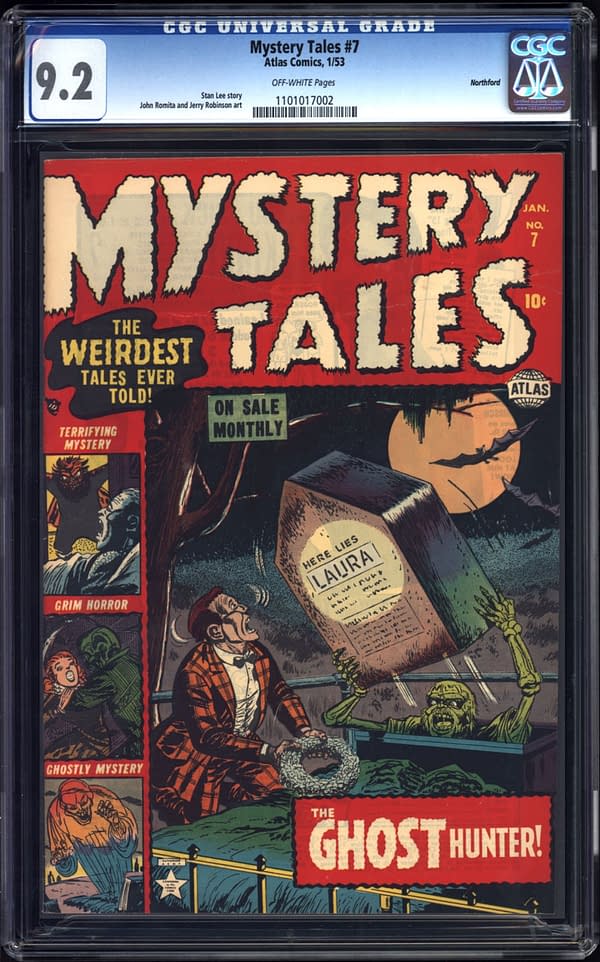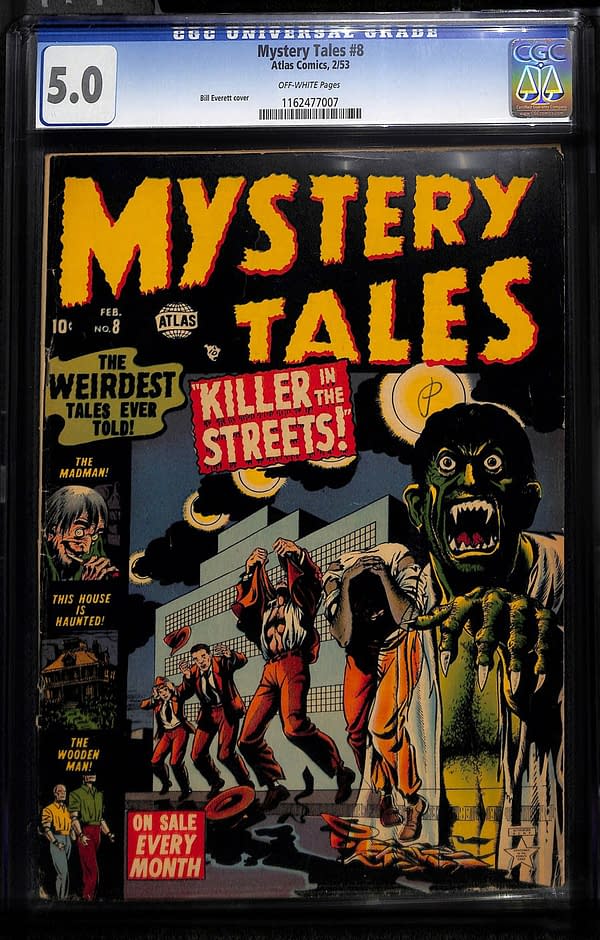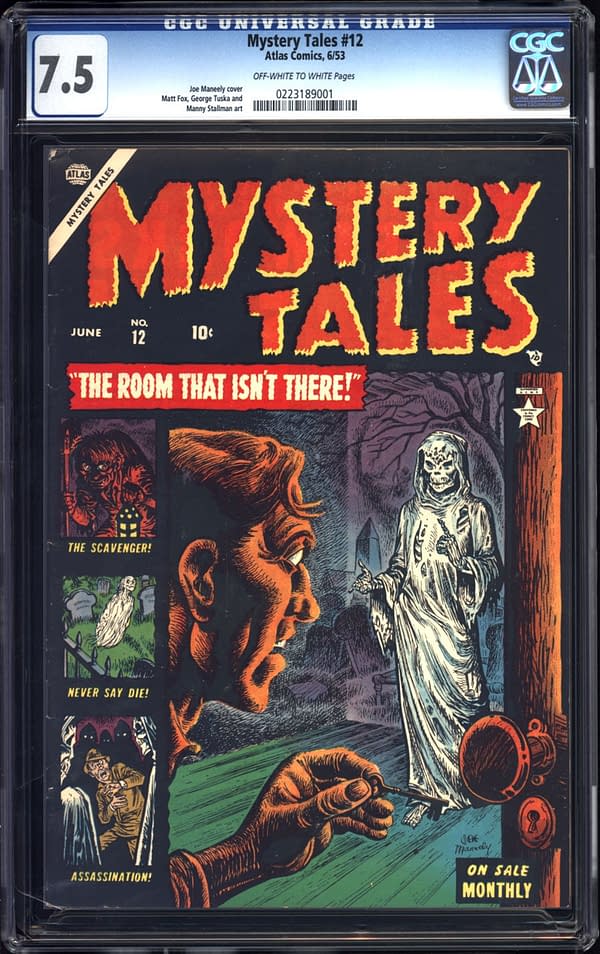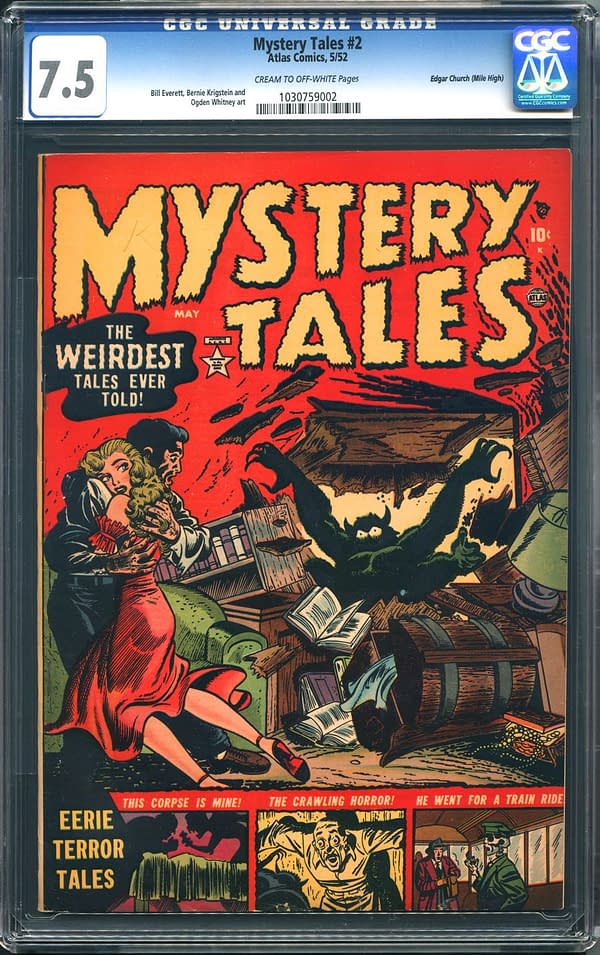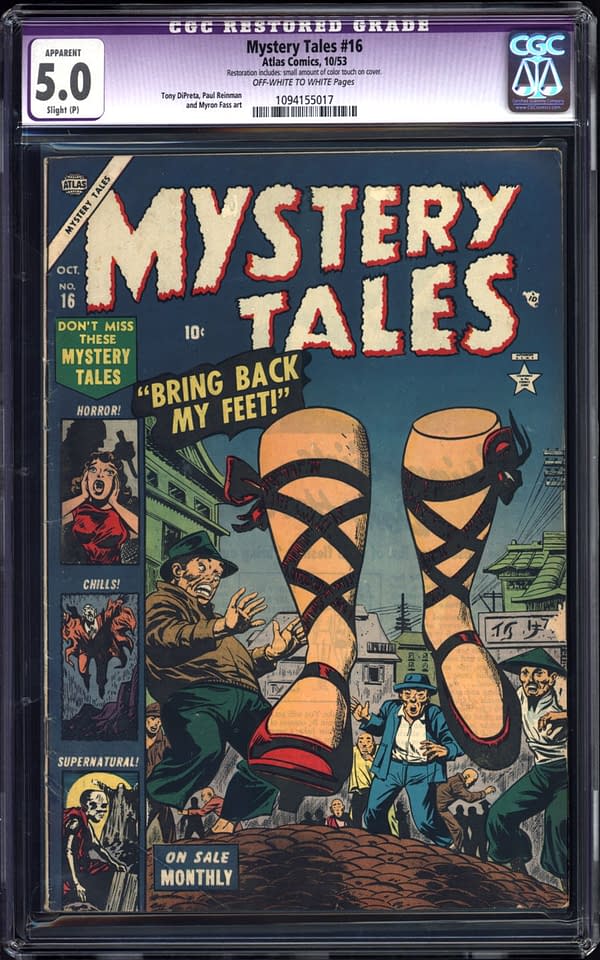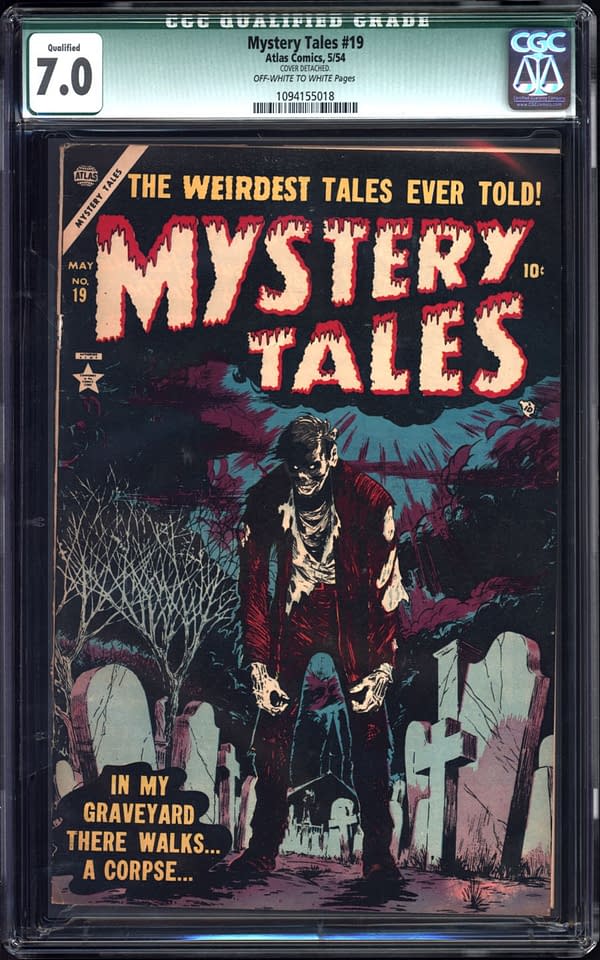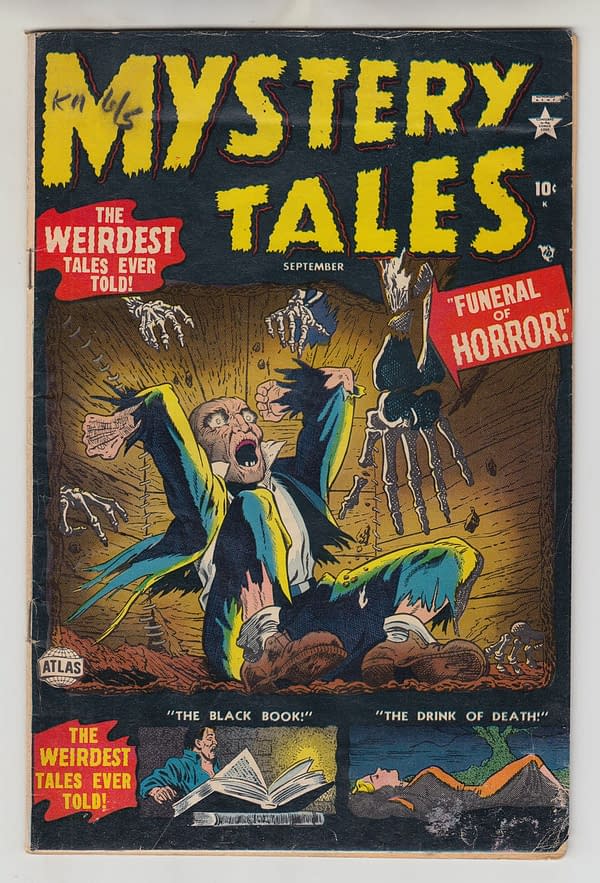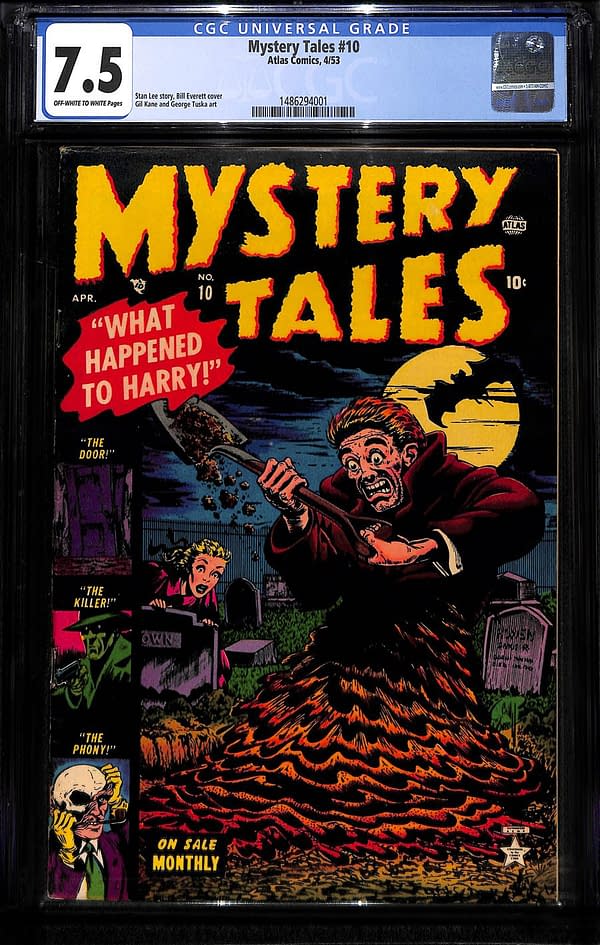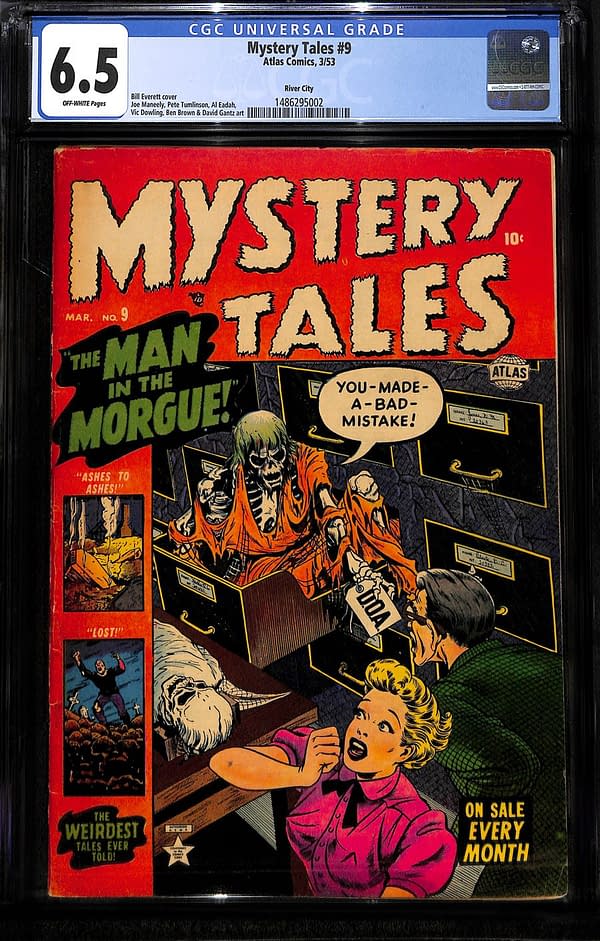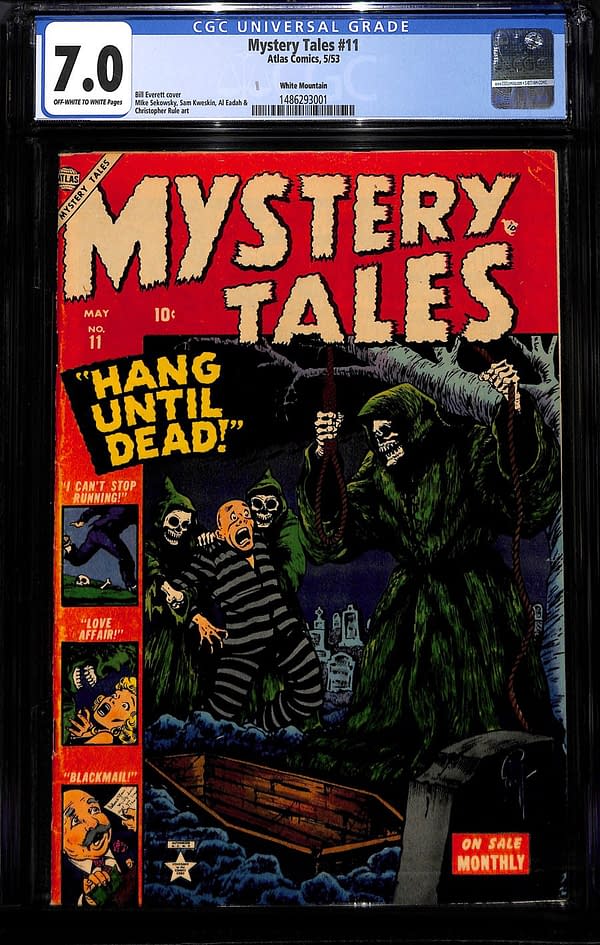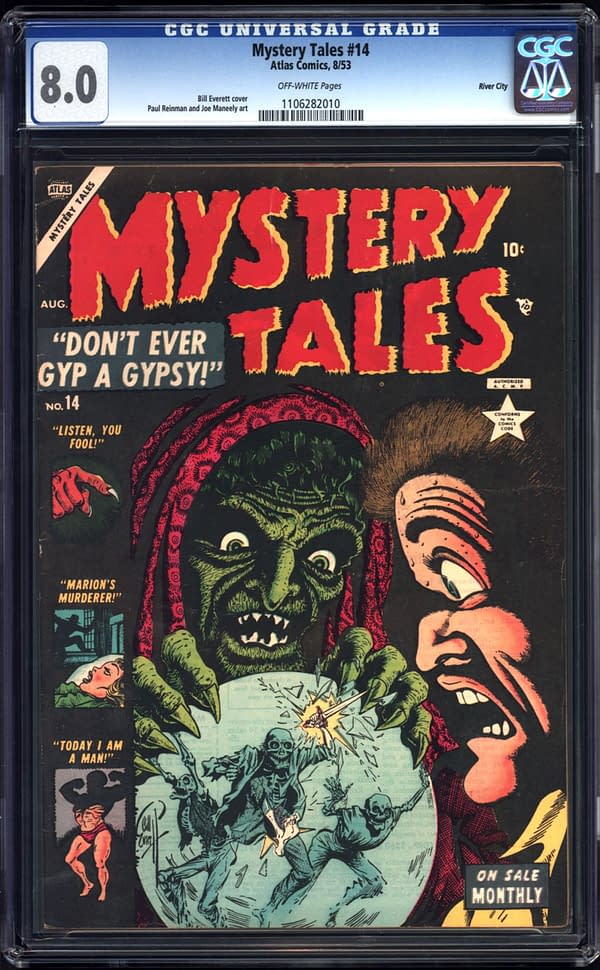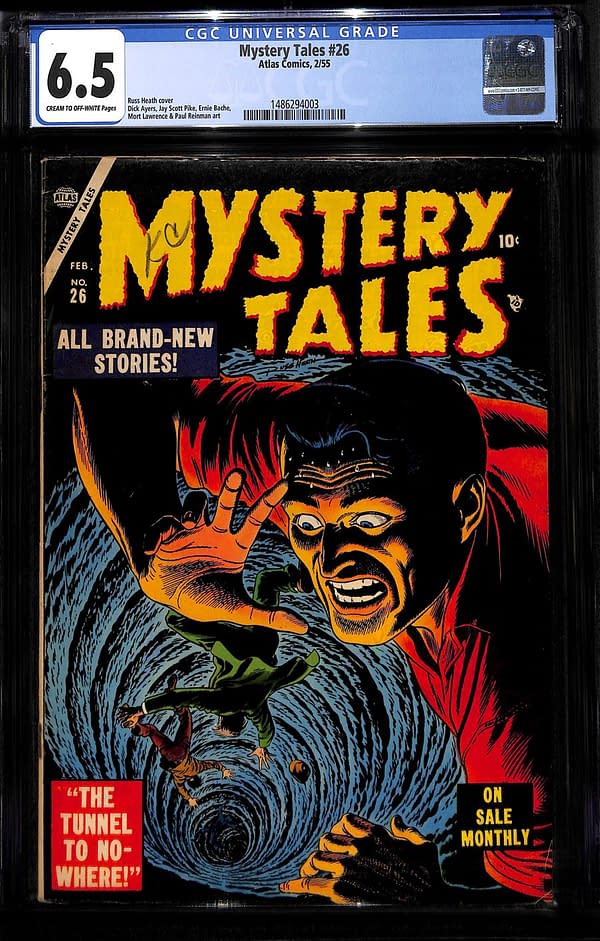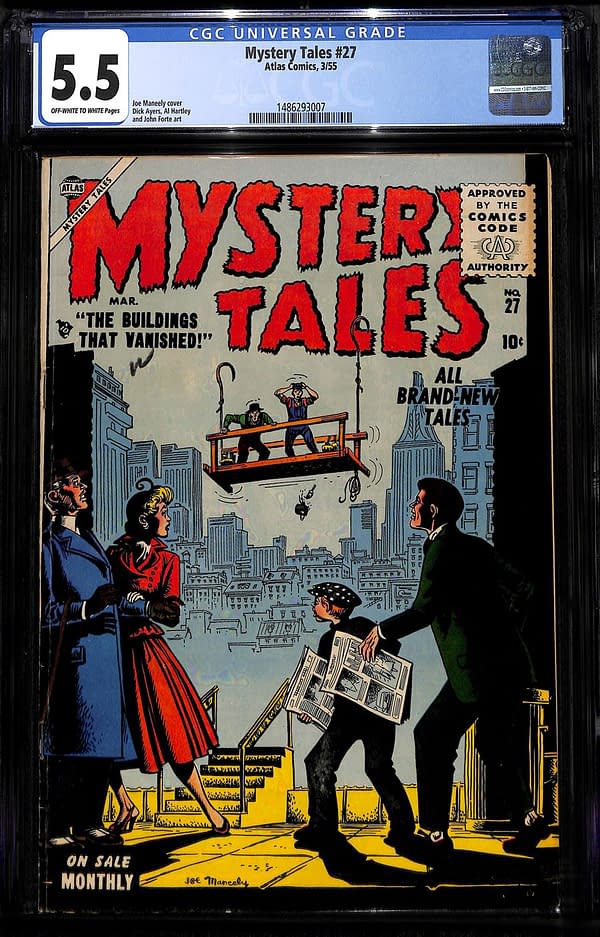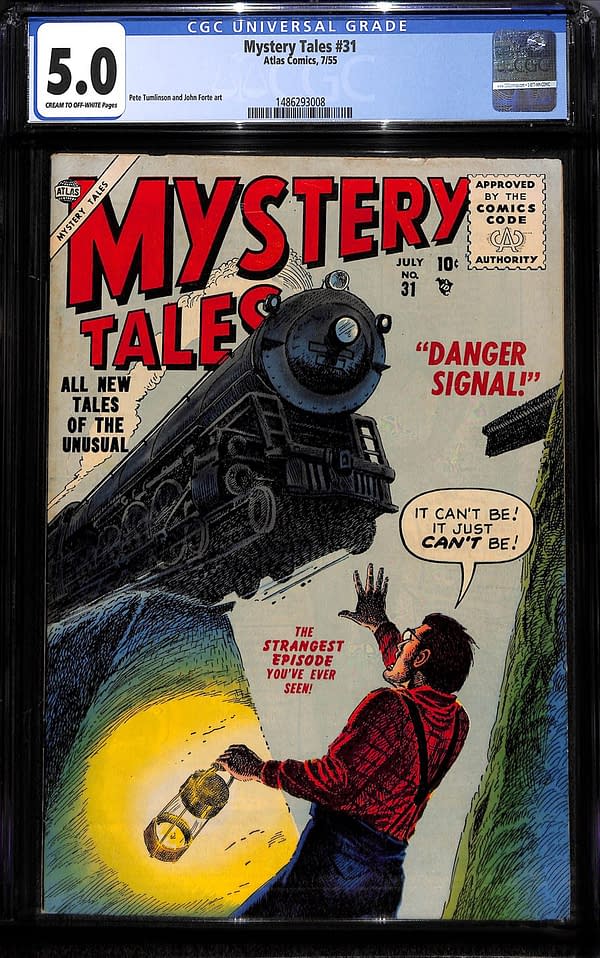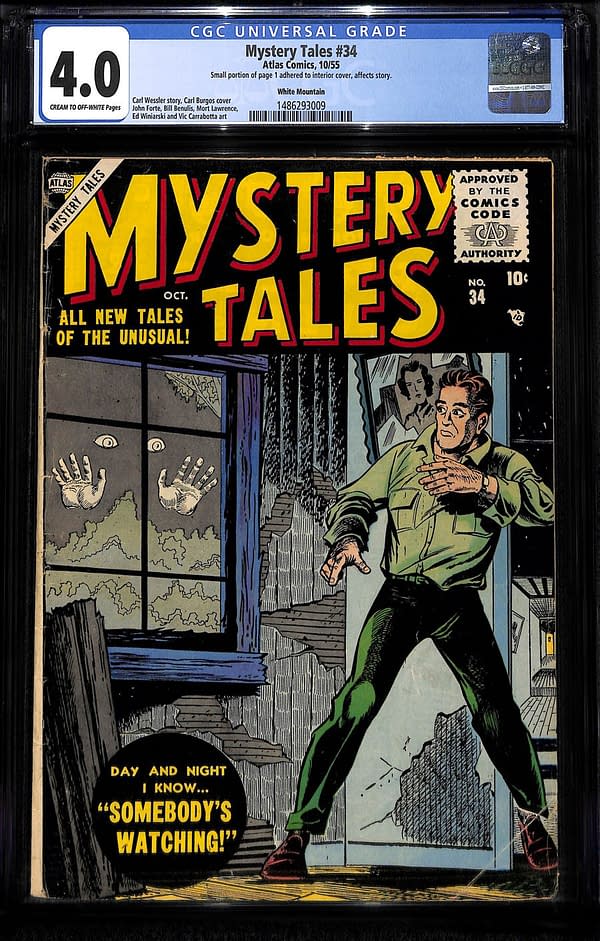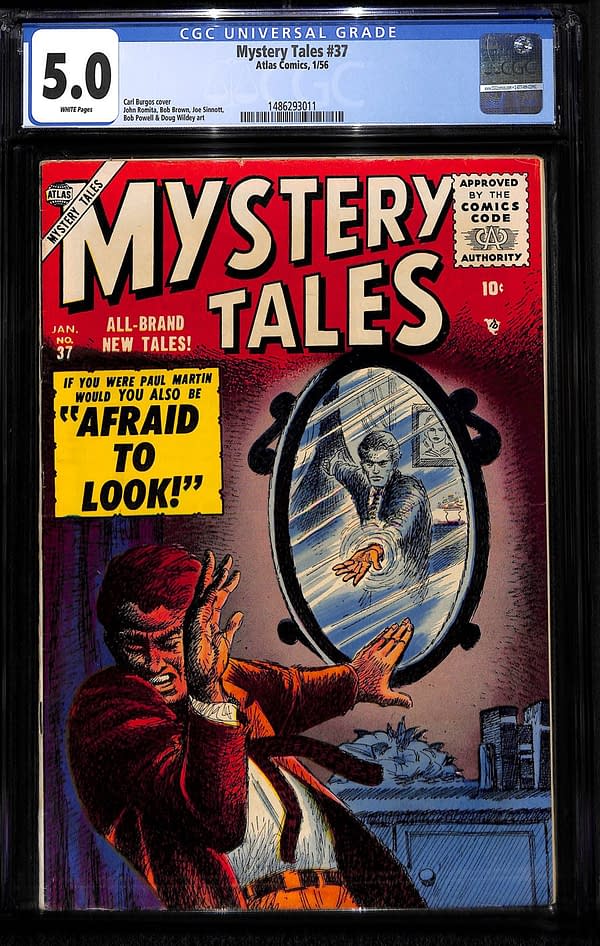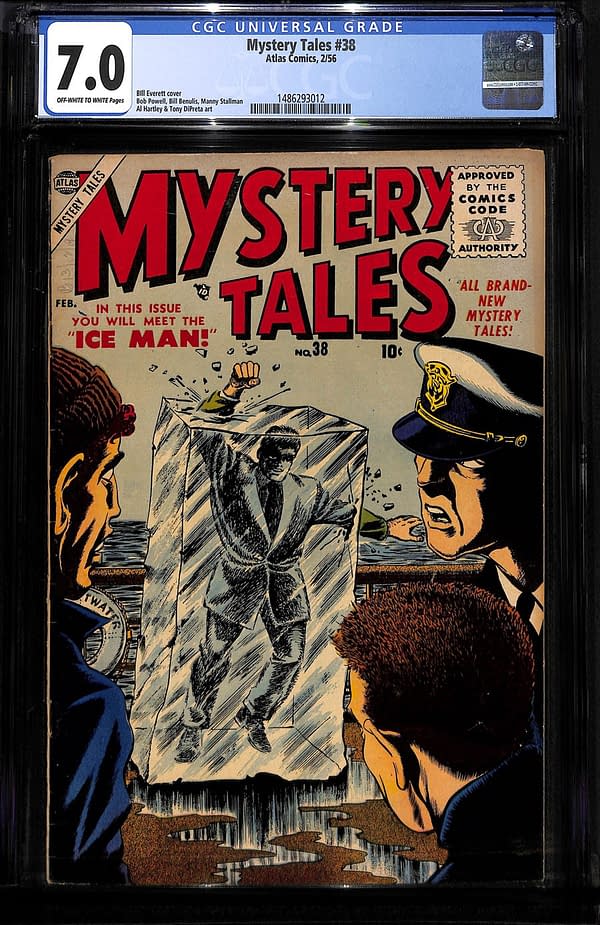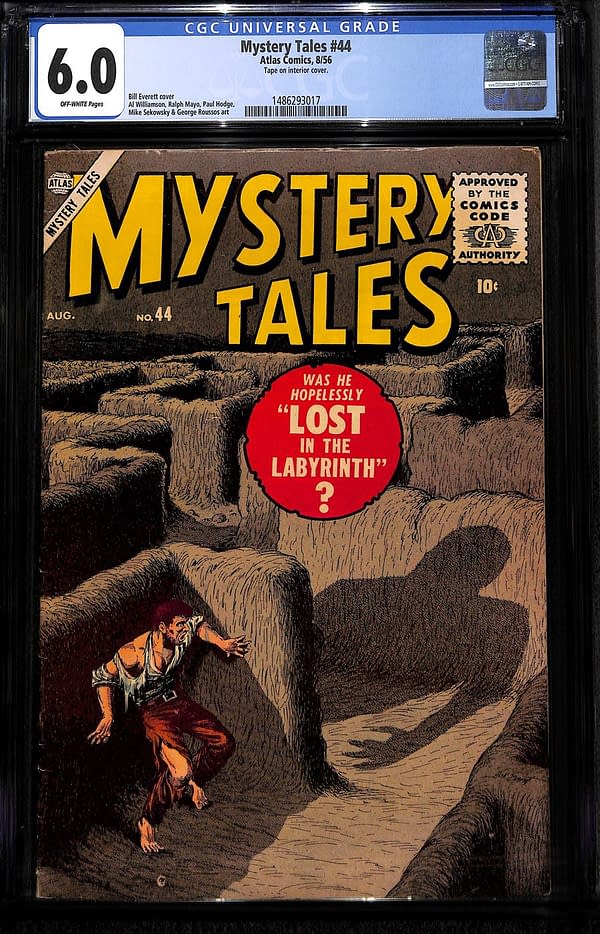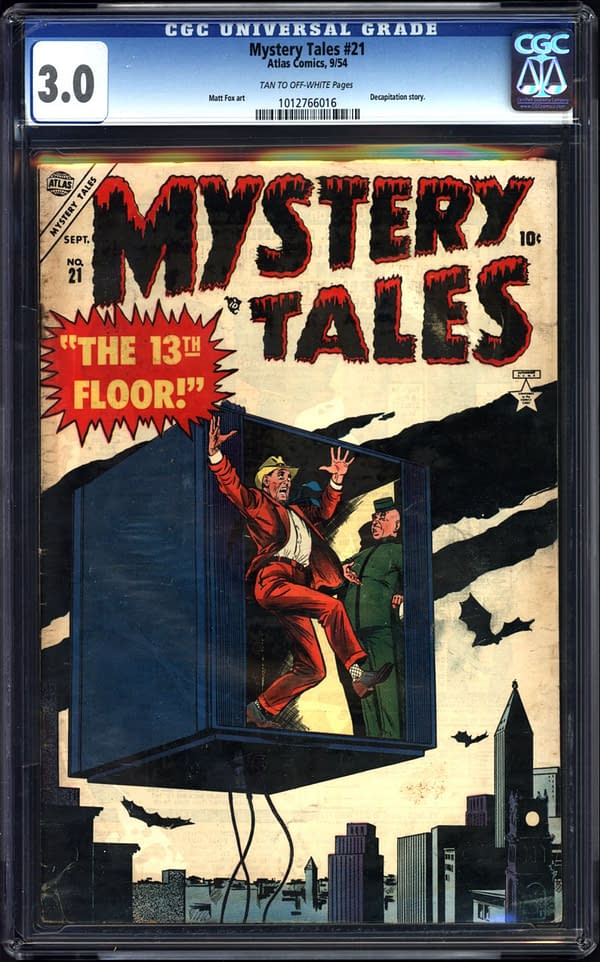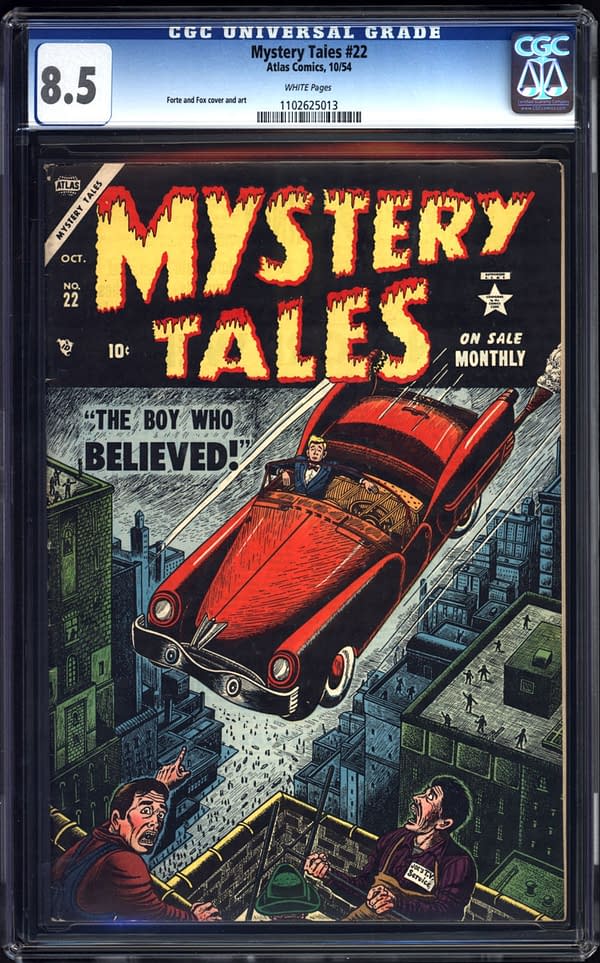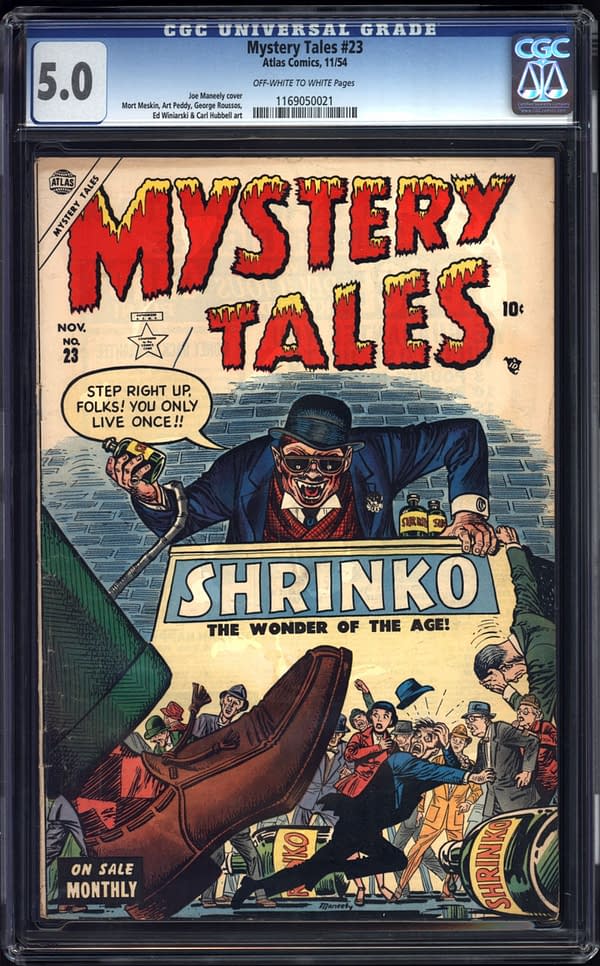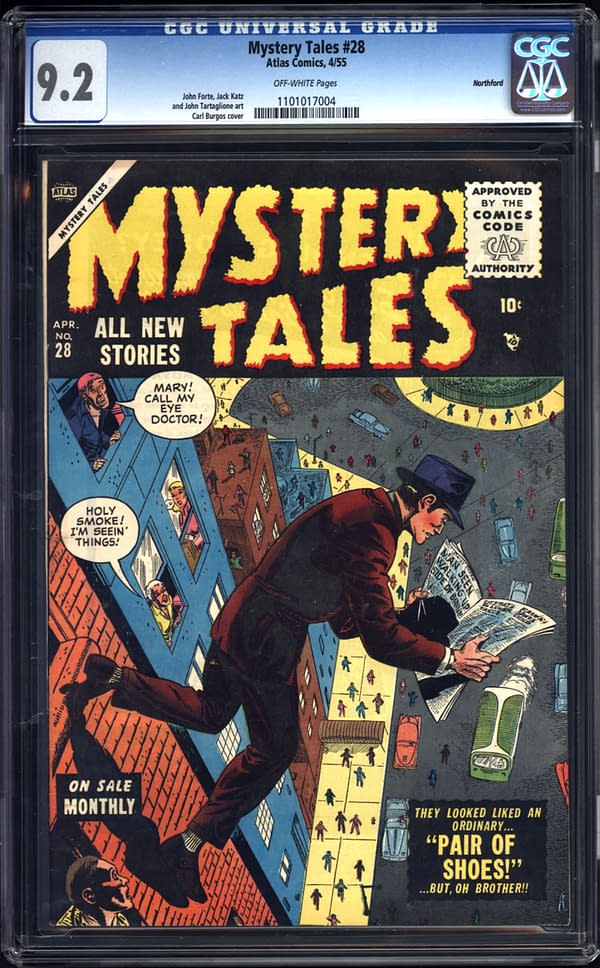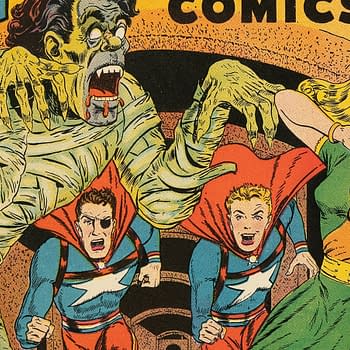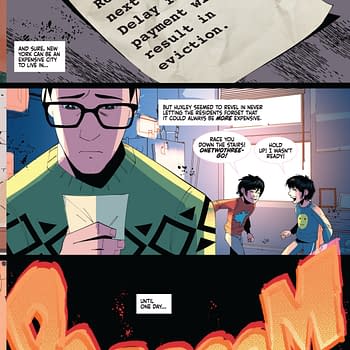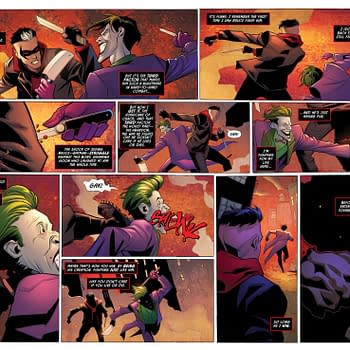Posted in: Comic Connect Sponsored, Comics, Comics History, Recent Updates, Sponsored, Vintage Paper | Tagged: Comics, golden age, HRL, Marvel Comics, Silver Age
The First Children of the Atom and the Lost Marvel Comics of the Atomic Age
I've been revisiting old comics through the lens of world history lately, and the results are often surprising. We tend to think of comics as being influenced by film, books, and other media, and while they have been, it's far less true than one might think.
The era of the early 1950s, a time that sits uncomfortably between the Golden Age and Silver Age, is far less studied than those two periods. We've started calling it the Atomic Age in recent years, for obvious reasons: it was the post-WWII world in which real-life science — and possibly horror — seemed destined to eclipse anything in fiction.
If you didn't live through it (and I didn't), those days were stranger than you think. I stumbled across this time lapse of every nuclear explosion since 1945 recently, which goes a long ways towards putting the Atomic Age in perspective. The world was charging at breakneck speed into a future it didn't quite understand, and the comics and other fiction of that era is a reflection of that. Fear and wonder in equal measures.
Americans were clearly struggling with the dichotomy of Atomic Age reality, simultaneously digging fallout shelters and practicing "duck and cover" drills while harnessing the optimism of nuclear energy. Atomic motifs flooded popular culture in the 1950s, when picture-perfect families sat down cheerfully for dinner, haunted by fears of total annihilation. Here in Las Vegas, Area 51's mushroom clouds, visible in town, were celebrated events with tourists sipping atomic-named cocktails. The female mascot of the era, Miss Atomic Bomb, [Mark's note — I added that link for context, and it is not to be missed. Wow.] posed gleefully in a mushroom cloud bikini.
The Ancient Terror of Radioactive Isotopes
I was perusing this wonderful set of the Marvel series Mystery Tales on Comic Connect earlier, and noticed how well it matches up with the history of the era. The series is best known to us today for the inclusion of a copy of Mystery Tales #40 in something known as Locke's Test in an episode of the television series Lost, but it has many more secrets to reveal than what we get a glimpse of in this single issue.
For example, the early horror evident at the outset of the series is likely inspired in large part by a renewed international interest in archaeology. In 1949, scientist Willard Libby of the University of Chicago developed a method for determining the age of organic material by measuring the amount of radioactive isotope carbon-14 within that material. Radiocarbon dating sparked a revolution in archaeology.
Mystery Tales launched in 1952 just as the world had became rather captivated with the field, and universities everywhere jumped into the fray. Newspapers were soon following the minutia of the latest finds and developments as if they were covering a new sport. "Hottest find of the season had been the accidental discovery of two Indian skeletons at Elsie, Michigan", reported The Daily Times-News of Burlington, North Carolina in the summer of 1951. As noted in the 1952 Dixie Dugan newspaper comic strip below, it sometimes seemed like people were digging up their own basements to seek fame and fortune from the old bones — and more — of the past.
Finds such as the Tollund Man and an extensive excavation of Stonehenge provided ample inspiration for tales from ancient graves, lurking horror from lost tombs, the dead walking the earth, and even vampires. This radiocarbon-enabled horror is quite evident in the early issues of Mystery Tales, as seen in the earlier covers here.
With little exception, one can see how most of those could've been inspired with the world's preoccupation with raising the dead, figuratively speaking.
Mystery of the Children of the Atom
Then in summer 1954, the covers of Mystery Tales make a distinct shift from shambling horror to something very different. People (and things) get very mysterious indeed: they float, split in half, shrink, and face inexplicably weird situations.
While one obvious instigator for this shift is the Kefauver/Wertham campaign against crime and horror comic books, the direction of this abrupt change also has a simple explanation: on February 28, 1954, the U.S. detonated its first hydrogen bomb with a project code named "Castle Bravo" at Bikini Atoll in the Marshall Islands. The detonation was 2.5 times as powerful as expected, and caused far higher levels of fallout over a much greater area than predicted. A Japanese fishing boat, and numerous military personnel and civilians in the area were exposed to radiation. It was the most serious radiological disaster the world had ever seen, and international reaction was immediate and harsh.
The world had titled on its axis, and the world's fiction tilted to compensate. Another obvious example of this is the 1954 film Godzilla from director Ishirō Honda, which is also directly inspired by the Castle Bravo incident.
As one of my readers has pointed out in the comments to this post, I've minimized the role of the Comics Code in this shift more than I should have. There's no doubt the shift was made necessary by the Code (or more accurately, the media campaign that led to the Code), but the content shift does precede the rising tide of the Kefauver/Wertham campaign and hearings, and the direction of the shift is pretty clearly the result of the fallout of the Atomic Age.
The shockwaves of Castle Bravo are evident throughout the comic books of the mid-1950s, DC Comics' My Greatest Adventure started in 1955, for example. But the shift in the Marvel line is more immediate and distinctive — and continued on into the Silver Age. Marvel's first Children of the Atom make their hesitant appearance here, stepping into a strange world that nobody quite understood.
If you missed out on these Mystery Tales, not to worry — Comic Connect will have more Atomic Age strangeness available from this same collection in their next auction.





